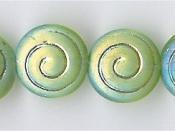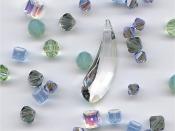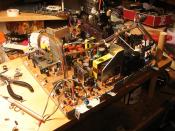Apparatus:
Large plastic tray
Colored beads (2 colors)
Sieve
2 plastic beakers
Hand shovel
Sand
Method:
Fill a large plastic tray about þ full with sand from outside.
Take two jars with two different color sets of beads and allow someone from a different group than you to count the beads in one of the jars.
Pour all the counted beads into the sand and mix thoroughly. Then take a scoop with the hand shovel placing it in the sieve to remove any sand. Now count the beads gathered in that scoop. The number counted or beads captured will be the n1 number.
Mark these beads by removing them and replacing them with different color beads, then release them and remix thoroughly. Now take another scoop and count the captured beads. The total number of captured beads on the second round will be your n2 number. N3 would be the number of marked beads captured on the second scoop.
Insert the N1 N2 and N3 numbers obtained in the equation N = N1 x N2 / N3 to find the total population size. Take the average of all 3 results to find the most probable population size.
Replace all beads of the first color in the sand and mix thoroughly while removing the second set of beads (or the marked beads).
Repeat the capturing marking releasing and recapturing mentioned earlier three times to obtain values for three trials.
Replace all beads of the first color in the sand and mix thoroughly while removing the second set of beads (or the marked beads) again.
Now repeat the capture mark release recapture method three more times varying the number of scoops taken a time to two scoops to give 3 sets of values seen in the table marked "with two scoops". Take...


